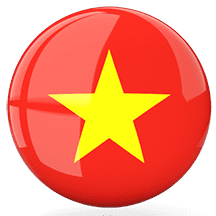Asean must
double down on economic integration so that it can better withstand growing
global headwinds, including rising protectionism and geopolitical uncertainty,
said Singapore’s Foreign Minister Vivian Balakrishnan on July 11.
Speaking to
Singapore media after the 58th Asean Foreign Ministers’ Meeting in Kuala
Lumpur, Dr Balakrishnan said the grouping’s response to recent developments,
including new tariff announcements from the US, must be to press ahead with
internal reforms and strengthen ties with external partners.
“Remember, our
overall vision ultimately is to make Asean a single production zone, a single
investment zone. And that means bringing down barriers, not just tariff
barriers but non-tariff barriers as well,” he said.
Dr Balakrishnan
noted that the overall tone of the week-long meetings that he had with Asean as
well as its key partners was “sober”, shaped by multiple crises worldwide.
He pointed to
the wars going on in Europe and the Middle East, and highlighted how the US
tariff announcements had occurred “rapid-fire”.
US President
Donald Trump had from July 8 started announcing levies of between 25 per cent
and 40 per cent on eight of the 10 Asean nations, which are slated to take
effect in August.
Singapore and
Vietnam, however, have yet to receive any formal notification from the White
House.
Dr Balakrishnan
stressed that in talks with the US, he had always underlined that trade is
strategic to Asean, and the flow of trade and investments is a key strategic
focus for all governments in the region.
In terms of how
the grouping is responding to what is happening to global trade as a result of
the US tariffs, he said the Asean ministers have decided that the grouping will
have to coordinate both foreign affairs and trade and economic development far
more closely at the Asean level.
He said Asean
will need to adjust how it operates, including how meetings are structured, to
ensure that its foreign policy and economic agendas are better aligned.
But the most
effective way the region can respond is to double down on its own integration,
stressed Dr Balakrishnan, as that is under Asean’s control.
He gave examples
of how the grouping must make sure that it removes every tariff and non-tariff
barrier, and optimises its competitive position.
“That’s a path
of no regret. And I would say the urgency and the salience of doing it now is
so much more obvious,” he said.
Dr Balakrishnan
also touched on recent developments in cross-border infrastructure, noting that
projects such as the
Johor-Singapore
Special Economic Zone and the upcoming Rapid Transit System Link
between Malaysia
and Singapore could serve as models for wider regional cooperation.
“There are
complementary strengths of both Johor and Singapore, and to the extent that we
can bring these strengths together, we make ourselves more competitive,” he
said.
He added that
people “beyond” the two areas are observing the special economic zone project
with interest.
The minister
added that the region is also exploring how trilateral cooperation between
Singapore, Malaysia and Indonesia could be scaled up, in line with the
longstanding “Sijori” concept – a reference to Singapore, Johor and the Riau
Islands.
The Sijori
growth triangle was established in 1994 between the three countries –
Indonesia, Malaysia and Singapore – to bolster economic links between them.
“We are also now
looking for opportunities in which the three countries – Indonesia, Singapore
and Malaysia – can do more in a synergistic and complementary way,” he said.
Singapore is
pushing for greater connectivity within Asean in both figurative and literal
terms, said Dr Balakrishnan. He cited the Asean Power Grid, which seeks to
connect the region’s electricity networks and support the transition to
sustainable energy.
The project has
attracted strong interest from Asean’s external partners, including those with
experience in clean energy and infrastructure, he added.
Other ongoing
initiatives include the Asean Digital Economy Framework Agreement, which aims
to enable seamless digital transactions, data flows and e-payments across
borders.
The agreement
was introduced in 2023 to boost the growth of digital trade and services in the
region. Studies suggest it could double the projected value of Asean’s digital
economy from US$1 trillion (S$1.3 trillion) to US$2 trillion by 2030.
But digital expansion
also brings risks, and Dr Balakrishnan acknowledged how scams have become a
problem, noting that people as far away as the US and Europe have fallen prey
to some of them.
Some of these
operations originate from within Asean, and there is a collective commitment by
the grouping to try to root out these activities and deal with the criminal
syndicates behind them.
Dr Balakrishnan
also highlighted efforts to expand Asean’s network of external economic ties,
pointing out that free trade agreements with Australia and New Zealand have
already been upgraded.
Negotiations
with China are near completion, and work with South Korea is expected to start
soon.
These are
efforts that Asean has made to expand its existing channels of trade and
increase its resilience, which Dr Balakrishnan said was in line with Prime
Minister Lawrence Wong’s recent comments about the grouping.
In a video
message delivered on July 5, the Singapore Prime Minister urged the grouping to
be bolder. He said Asean must become a more seamless and competitive single
market if it wants to stay relevant in a changing global economy.
“Prime Minister
Wong’s call for reform and that sense of urgency was very timely. People
recognised that, and it gives an additional push to all these efforts at accelerating
integration and expanding the network of ties with our Asean external
partners,” said Dr Balakrishnan.
Source: The
Straits Times (Asean
must double down on economic integration to withstand external pressures:
Vivian Balakrishnan | The Straits Times)
Published 11 Jul
2025
July 21, 2025













